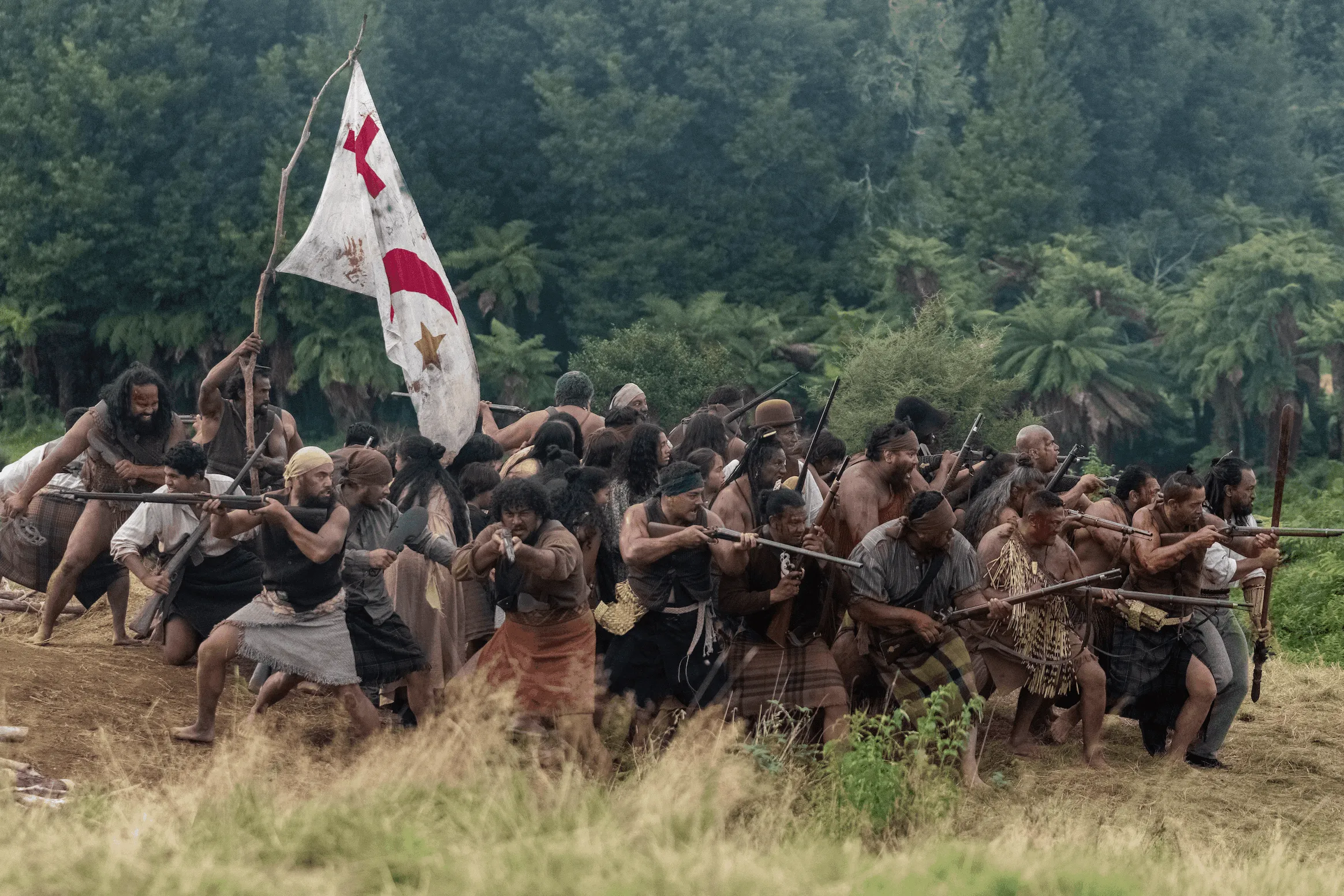Strong Bonds Add Depth To Emotive Aotearoa Film
It's payback time - but the positive type. Find out how a friendship built decades ago has played a key part in bringing star power to the Matariki-released film Ka Whawhai Tonu.
Written by

Aotearoa director Mike Jonathan and superstar actor Temuera Morrison’s bond goes back a long way.
Before Morrison became an international star and cult hero, he turned to Jonathan to help him make his way to Hollywood.
“Back in the day, I had to find a guy with a camera, sound and [who could] edit and send my auditions to Hollywood so I could have a chance of making it over there,” Morrison recalls.
“Mike was a big supporter of me. And this was his time - this was his film, this was his project.”
The timing couldn’t have been better for Morrison, who was on a break filming his latest project Chief of War with Hollywood star Jason Momoa.
"I was able to get out for ten days and go support my friend [Mike]. It was a bit like a reunion and just seeing all the old faces from some of my old movies [like] Once Were Warriors.

"But this was payback for my buddy Mike."
Jonathan’s latest film, Ka Whawhai Tonu - Struggle Without End, is about the 1864 Battle of Ōrākau. Aotearoa’s first land warfare between Māori and colonial soldiers. And Morrison's not the only big name to be attracted to the project, with fellow local stars Cliff Curtis and Miriama Smith, along with British cult hero Jason Flemyng of Lock, Stock & Two Smoking Barrels fame.
Without spoiling the film, Jonathan says “It’s about two kids finding connection from different worlds.”
On face value, it sounds like the description of a historical drama. However, within a few minutes of the film you are thrown into a world of chaos, like something from a Clint Eastwood western.
“It’s just one of these films that sits you back in your seat,” explains Morrison. “It takes you a while to get out of the theatre because you’re just thinking about the powerful images you’ve just been confronted with, and it feels like you’re in the battle at times.”
Jonathan’s inspiration to retell the Battle of Ōrākau started when he was 9 years old.
His mother took him to see Geoff Murphy’s acclaimed 1983 film Utu. During the movie, Jonathan’s mother turned to him and saw he was crying and asked him why. Jonathan said it was the first time he saw “people with the same colour as me on screen.”

It’s one of the main reasons why Jonathan got into the film industry, determined to “tell a story from our [Māori] perspective.” The film's dialogue is almost entirely in Te Reo, with much of it taken from records of what was said at some of the hui held at the time.
“It’s all reo and it’s all beautiful,” says Jonathan, who made it his mission to engage with iwi to ensure the stories being told were authentic and real. “Partnering is key and taking them with us on the journey.”
Many of the characters depicted on screen are being played by their direct descendants, including Morrison’s character Rewi Maniapoto.
But it’s not just Morrison’s character who plays a starring role. The young cast is strong and full of mana, despite many not having any acting experience, including 16-year-old Hinerangi Harawira Nicholas who plays Kōpū.
Morrison declares “I really got a lot out of it because I had to lift my game. I was going 'Man, here are these people doing this stuff and they never even acted before' - and here I am, supposed to be the professional actor. So I really had my work cut out because of the passion, the performances, the natural abilities - what we call the ihi and wehi - coming from our performers in a natural way.”
Jonathan’s proudest moment in the film is at the very beginning when Morrison is having a deep and powerful kōrero with local iwi members. “He just had this presence; the camera was rolling and he just went for it. He started crying and you could just feel it. It wasn’t acting.”
And that’s the poignant part of this film. It’s not acting. It’s based on past real-life events that happened in Aotearoa. A brutal war where thousands lost their lives, including young children and women.
The film is confronting and forces you in some ways to acknowledge our bloodied past. “It’s just a period of time where I think, generally, some New Zealanders have amnesia about how this country was actually settled,” says Morrison.
This is a film for all New Zealanders. Not just Māori. It's a message the film’s director hopes will start a nationwide kōrero - “let’s acknowledge this and have a conversation going forward. I want to get out of that darkness and into a new place.”